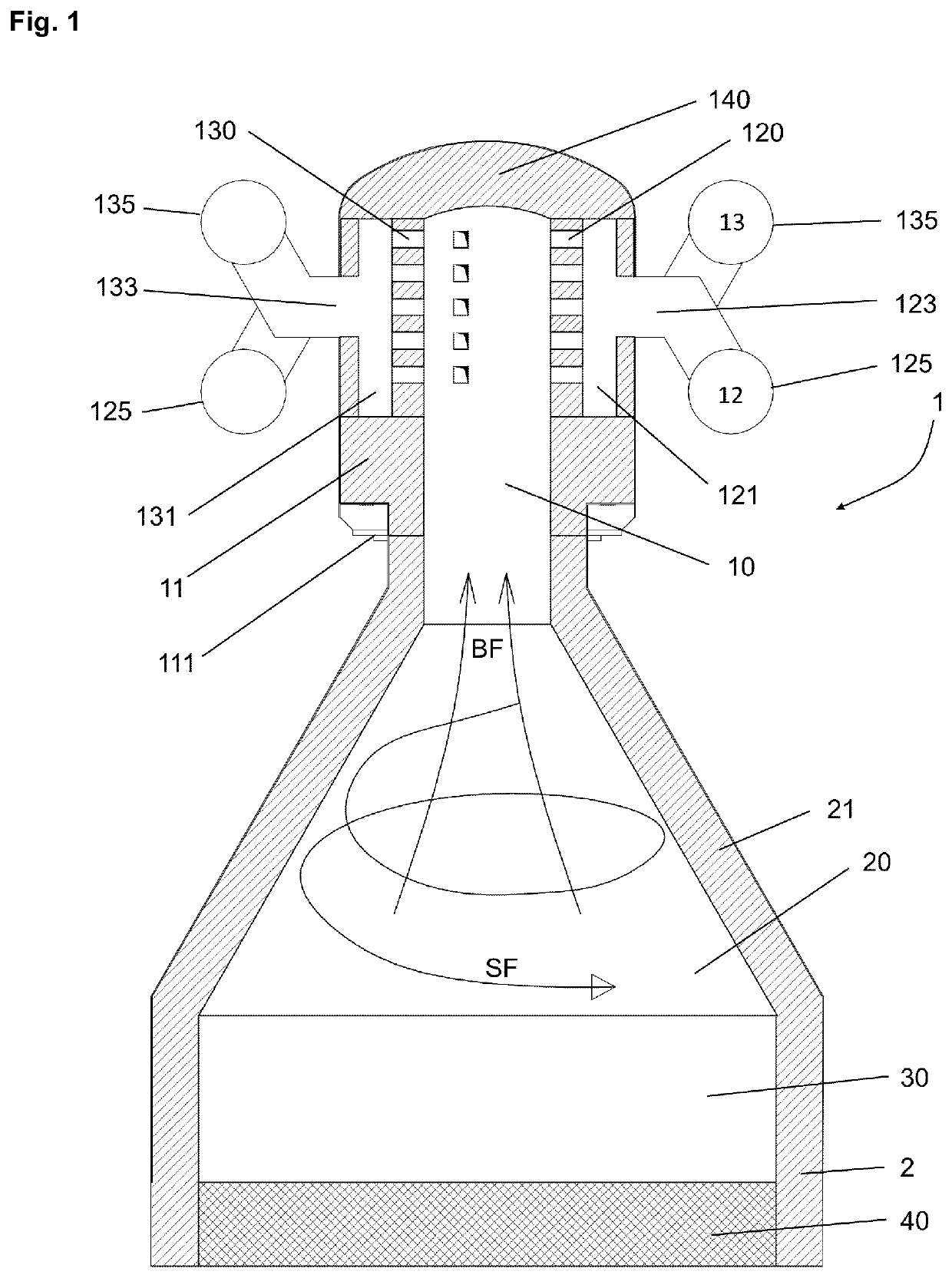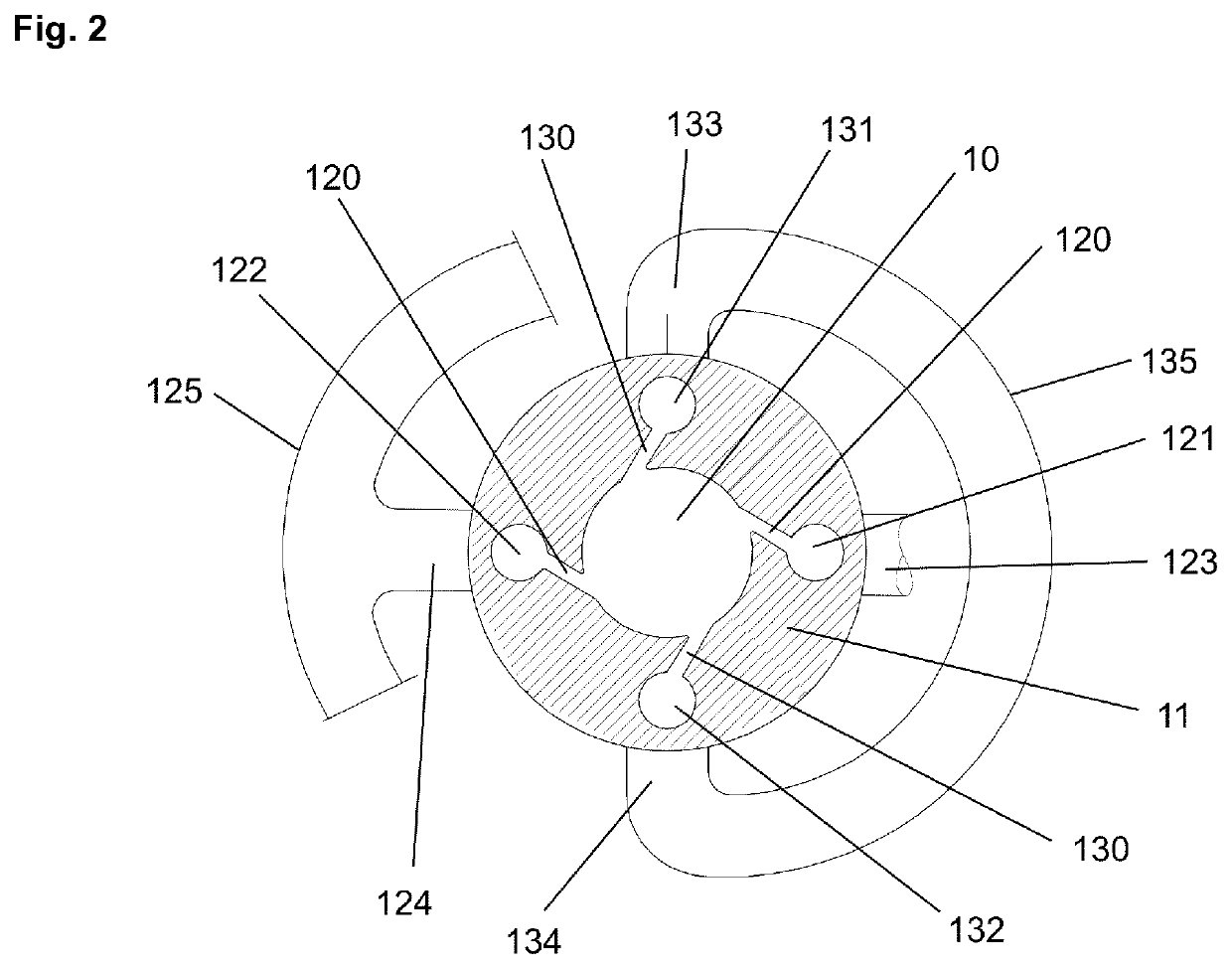Top combustion stove
a combustion stove and top technology, applied in the direction of combustion types, combustion using lump and pulverulent fuel, furnaces, etc., can solve the problems of significant assembly work and fragile shell structure of the shell, and achieve good or even better combustion performan
- Summary
- Abstract
- Description
- Claims
- Application Information
AI Technical Summary
Benefits of technology
Problems solved by technology
Method used
Image
Examples
Embodiment Construction
[0025]FIG. 1 shows a cross-section of the upper part of a preferred embodiment of an apparatus for heating air for the operation of regenerators (hot blast stoves) for blast furnaces.
[0026]The burner 10 has a burner shell 11 of circular cross-section and is axially mounted by flange assembly 111 in the upper section of the hot blast stove 1 which comprises a stove shell 2 with a main volume of regenerative checker bricks 40 for storing and exchanging heat and a circulation zone or headroom 30 without checker bricks.
[0027]The burner (or combustion chamber) 10 is closed on top by dome 140 and has separate feeding arrangements for the combustion media air 12 and gas 13. The feeding arrangements include air and gas feeding pipes 125, 135 and air and gas connecting pipes 123, 124, 133, 134 connecting the feeding pipes to the vertical air and gas distribution chambers 121, 122, 131, 132, respectively. Air and gas are fed to the burner 10 through a number of alternating vertical arrays of ...
PUM
| Property | Measurement | Unit |
|---|---|---|
| angle | aaaaa | aaaaa |
| aperture angle | aaaaa | aaaaa |
| aperture angle | aaaaa | aaaaa |
Abstract
Description
Claims
Application Information
 Login to View More
Login to View More - R&D
- Intellectual Property
- Life Sciences
- Materials
- Tech Scout
- Unparalleled Data Quality
- Higher Quality Content
- 60% Fewer Hallucinations
Browse by: Latest US Patents, China's latest patents, Technical Efficacy Thesaurus, Application Domain, Technology Topic, Popular Technical Reports.
© 2025 PatSnap. All rights reserved.Legal|Privacy policy|Modern Slavery Act Transparency Statement|Sitemap|About US| Contact US: help@patsnap.com


